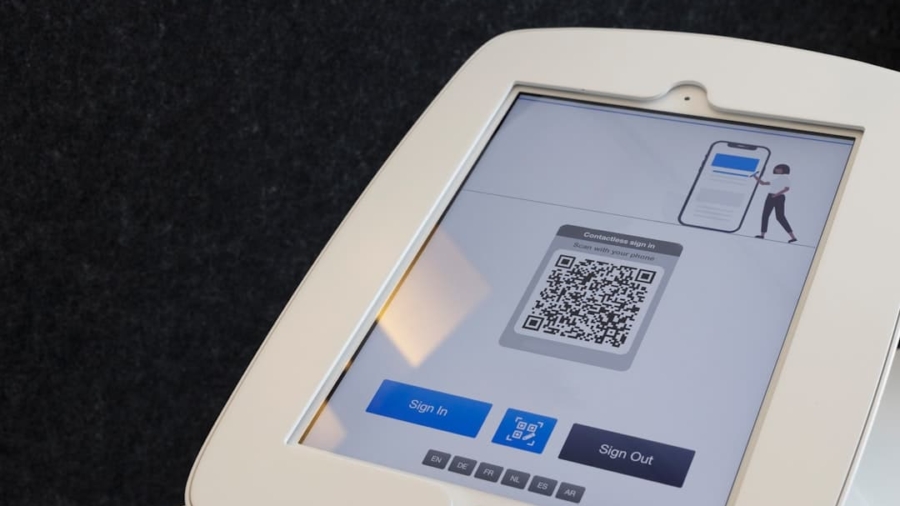Biometric authentication has emerged as a transformative technology in the financial sector, reshaping how institutions verify identities and secure transactions. By leveraging unique biological traits such as fingerprints, facial recognition, and iris scans, financial organizations can enhance security measures while improving user experience. The increasing prevalence of cyber threats and identity theft has necessitated a shift from traditional authentication methods, such as passwords and PINs, which are often vulnerable to breaches.
Biometric systems offer a more robust alternative, as they rely on characteristics that are inherently tied to the individual, making them difficult to replicate or steal. The integration of biometric authentication into financial services is not merely a trend but a response to the evolving landscape of digital banking and online transactions. As consumers demand more convenient and secure ways to manage their finances, financial institutions are compelled to adopt innovative technologies that meet these expectations.
The rise of mobile banking applications and digital wallets has further accelerated the adoption of biometric solutions, allowing users to authenticate transactions seamlessly and securely. This article delves into the current applications, advantages, limitations, emerging trends, security concerns, regulatory considerations, and potential impacts of biometric authentication in the financial industry.
Key Takeaways
- Biometric authentication is a secure and convenient method of verifying a person’s identity using unique biological traits such as fingerprints, facial recognition, or voice patterns.
- In the financial industry, biometric authentication is currently being used for tasks such as mobile banking, ATM transactions, and online payments to enhance security and streamline user experience.
- The advantages of biometric authentication in finance include increased security, reduced fraud, and improved customer experience, while limitations include potential privacy concerns and the need for backup authentication methods.
- Emerging trends and innovations in biometric authentication for financial transactions include the use of behavioral biometrics, continuous authentication, and biometric wearables.
- Security and privacy concerns in biometric authentication for financial services include the risk of biometric data breaches, potential misuse of personal information, and the need for strict data protection measures.
Current Applications of Biometric Authentication in the Financial Industry
Biometric authentication is currently employed in various capacities within the financial industry, enhancing security protocols across multiple platforms. One of the most common applications is in mobile banking apps, where fingerprint recognition and facial recognition technologies are utilized to grant users access to their accounts. For instance, major banks like Bank of America and Wells Fargo have integrated fingerprint scanning into their mobile applications, allowing customers to log in quickly without the need for cumbersome passwords.
This not only streamlines the user experience but also significantly reduces the risk of unauthorized access. Another notable application is in ATMs equipped with biometric capabilities. Some financial institutions have begun implementing iris recognition technology at ATMs, enabling customers to withdraw cash without needing a card or PIN.
This innovation not only enhances security by ensuring that only the authorized user can access their account but also addresses concerns related to card skimming and theft. Additionally, biometric authentication is being utilized in customer service interactions, where voice recognition systems can verify a customer’s identity during phone calls, further reducing the risk of fraud.
Advantages and Limitations of Biometric Authentication in Finance
The advantages of biometric authentication in finance are manifold. One of the most significant benefits is enhanced security. Biometric traits are unique to each individual, making it exceedingly difficult for fraudsters to impersonate someone else.
This level of security is particularly crucial in an era where data breaches are rampant and traditional authentication methods are increasingly compromised. Furthermore, biometric systems can provide a more convenient user experience; customers can authenticate transactions quickly without remembering complex passwords or carrying physical tokens. However, despite its advantages, biometric authentication is not without limitations.
One major concern is the potential for false positives or negatives in biometric systems. For example, environmental factors such as lighting conditions can affect facial recognition accuracy, while physical changes like cuts or injuries can impact fingerprint scanning. Additionally, there are concerns regarding the storage and management of biometric data.
Unlike passwords that can be changed if compromised, biometric traits are permanent; if a database containing biometric information is hacked, individuals cannot simply reset their fingerprints or facial features.
Emerging Trends and Innovations in Biometric Authentication for Financial Transactions
As technology continues to evolve, so too do the innovations in biometric authentication within the financial sector. One emerging trend is the use of multi-modal biometric systems that combine different types of biometric data for enhanced accuracy and security. For instance, a system might utilize both facial recognition and voice recognition to authenticate a user, thereby reducing the likelihood of unauthorized access due to spoofing or other fraudulent activities.
This multi-layered approach not only bolsters security but also provides a more flexible user experience. Another notable innovation is the integration of artificial intelligence (AI) and machine learning algorithms into biometric systems.
For example, AI can help identify patterns in user behavior that may indicate fraudulent activity, allowing financial institutions to respond proactively to potential threats. Additionally, advancements in liveness detection technology are being developed to ensure that biometric systems can distinguish between real users and fake representations, such as photographs or masks.
Security and Privacy Concerns in Biometric Authentication for Financial Services
While biometric authentication offers enhanced security features, it also raises significant security and privacy concerns that must be addressed by financial institutions. One primary concern is the potential for data breaches involving biometric information. Unlike passwords that can be changed if compromised, stolen biometric data poses a long-term risk since an individual’s biological traits cannot be altered.
This permanence makes it imperative for financial organizations to implement robust security measures to protect biometric databases from cyberattacks. Moreover, privacy concerns surrounding biometric data collection and usage are paramount. Consumers may be apprehensive about how their biometric information is stored, processed, and shared by financial institutions.
The lack of transparency regarding data handling practices can lead to distrust among customers. Financial organizations must ensure compliance with privacy regulations and communicate clearly with users about how their data will be used and protected. Implementing strong encryption methods and anonymizing biometric data can help alleviate some privacy concerns while fostering trust between consumers and financial institutions.
Regulatory and Compliance Considerations for Biometric Authentication in Finance
The implementation of biometric authentication in finance is subject to various regulatory and compliance considerations that vary by jurisdiction. In many regions, financial institutions must adhere to strict data protection laws that govern how personal information is collected, stored, and processed. For instance, the General Data Protection Regulation (GDPR) in Europe imposes stringent requirements on organizations handling personal data, including biometric information.
Financial institutions must ensure that they obtain explicit consent from users before collecting their biometric data and provide clear information about its intended use. Additionally, regulatory bodies may require financial organizations to conduct regular audits and assessments of their biometric systems to ensure compliance with established standards. This includes evaluating the effectiveness of security measures in place to protect biometric data from unauthorized access or breaches.
As regulations continue to evolve in response to technological advancements, financial institutions must remain vigilant in adapting their practices to meet compliance requirements while maintaining customer trust.
Potential Impacts of Biometric Authentication on the Future of Financial Services
The widespread adoption of biometric authentication has the potential to significantly impact the future landscape of financial services. As consumers increasingly prioritize convenience and security in their banking experiences, financial institutions that embrace biometric technologies may gain a competitive edge over those that rely solely on traditional methods. The ability to authenticate transactions quickly and securely could lead to increased customer satisfaction and loyalty.
Moreover, as biometric authentication becomes more prevalent, it may pave the way for new business models within the financial sector. For instance, personalized banking experiences could be enhanced through biometrics by allowing institutions to tailor services based on individual user preferences and behaviors. Additionally, as more consumers adopt digital wallets and mobile banking solutions that incorporate biometrics, there may be a shift towards cashless societies where traditional banking practices evolve to accommodate new technologies.
Recommendations for Implementing Biometric Authentication in Finance
For financial institutions considering the implementation of biometric authentication systems, several key recommendations should be taken into account to ensure successful integration and user acceptance. First and foremost, it is essential to conduct thorough research on available biometric technologies and select solutions that align with organizational goals while prioritizing user experience and security. Furthermore, organizations should invest in educating customers about the benefits and functionalities of biometric authentication systems.
Clear communication regarding how their data will be used and protected can help alleviate privacy concerns and foster trust among users. Additionally, implementing multi-factor authentication alongside biometrics can provide an extra layer of security while enhancing user confidence. Finally, continuous monitoring and evaluation of biometric systems are crucial for maintaining effectiveness over time.
Regular audits should be conducted to assess compliance with regulatory requirements and identify potential vulnerabilities within the system. By staying proactive in addressing security concerns and adapting to emerging trends, financial institutions can successfully navigate the complexities of biometric authentication while delivering secure and convenient services to their customers.
In the rapidly evolving landscape of financial technology, biometric authentication is emerging as a pivotal innovation, promising enhanced security and user convenience. An insightful article that complements the discussion on the future of biometric authentication in finance is available on Hacker Noon, which covers a range of topics across the tech sector. This article delves into various technological advancements and their implications across different industries, providing a broader context for understanding the role of biometrics in finance. For more information, you can read the related article here.
FAQs
What is biometric authentication?
Biometric authentication is a security process that uses unique biological characteristics, such as fingerprints, facial recognition, or iris scans, to verify a person’s identity.
How is biometric authentication used in finance?
Biometric authentication is used in finance to provide secure access to accounts, authorize transactions, and prevent fraud. It offers a more secure and convenient alternative to traditional methods such as passwords and PINs.
What are the benefits of biometric authentication in finance?
Some benefits of biometric authentication in finance include increased security, reduced fraud, improved customer experience, and streamlined authentication processes.
What are the potential risks of biometric authentication in finance?
Potential risks of biometric authentication in finance include privacy concerns, data breaches, and the possibility of biometric data being stolen or misused.
How is biometric authentication expected to evolve in the future of finance?
In the future, biometric authentication in finance is expected to become more widespread, with advancements in technology leading to improved accuracy, speed, and integration with other financial services.



